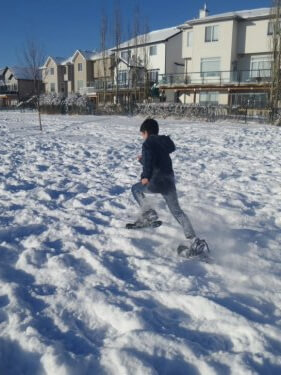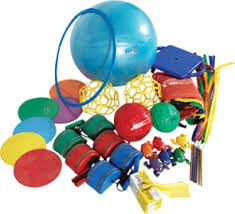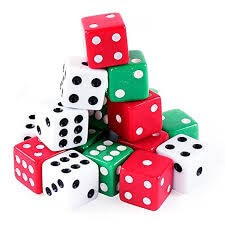Elementary school teachers are commonly referred to as “generalist” teachers because they normally teach across all the curricular areas. For generalist teachers, the connection of curricula can be effective in helping students experience meaningful learning; it helps students “connect the dots.” Often overlooked however is that elementary school physical education specialists can help support generalists in “connecting the dots” between physical education and other curricular areas to enhance student learning.

Significantly, students who are exposed to connected or integrated curricular areas demonstrate academic performance equal to or better than students who are exposed to discipline-based programs (Drake & Reid, 2010). And, implementing integrative activities across different subject areas has been recognized as being effective for fostering learning, while maintaining high levels of student motivation, creativity, and discovery (Bradford & Schmidt, 2016). Benefits from cross-curricular connections also include: building on prior knowledge; unifying student learning; reflecting real world situations; and matching the way students think (Alberta Education, 2007).
Purposefully connecting competencies from within or across subject areas develops the understanding of key curricular learning outcomes. However, according to Gleddie, Hickson, and Bradford (2018), although cross-curricular learning refers to connecting subject areas, teachers must recognize the importance of meeting the unique intended learning outcomes in each curricular area. It is not a ‘true’ cross-curricular connection when one subject area receives a great deal of focus, while the other subject area receives minimal. For example, just because a teacher takes a Grade 4 class outside to search for and collect various items related to a science project, the lesson is not a ‘true’ cross-curricular connection to physical education (Gleddie, et al., 2018). When students are simply asked to travel to various spots to collect items such as pine-cones, rocks, and leaves, although physical activity is involved during this lesson, no learning outcomes related to physical education are explicitly met.
In contrast, when students are afforded opportunities to snowshoe and explore winter habitats of animals, the possibility of cross-curricular learning can be greatly enhanced. By providing an overview of snowshoeing technique, allowing time for practice and instruction, and then addressing the way animals create their winter habitats, before setting the students off on their explorations, the learning experience intentionally includes both physical education and science learning outcomes (Gleddie, et al., 2018).
Although cross-curricular connections can be successfully applied throughout K-12 classrooms, this article intentionally focuses on early learners (i.e., K-3) and physical and numeracy literacies to illustrate how to “connect the dots.”

Connecting Numeracy to the World of Physical Education
With careful planning, physical educators can share ideas and strategies to help K-3 generalist teachers recognize how we can work together to help early learners experience the benefits of cross-curricular connections in mathematics (numeracy focus) and physical education (physical literacy focus). We can help our “generalist” colleagues to teach and plan cross-curricular lessons with physical education, and ensure that all the intended learning outcomes are met. This part of the process does not differ from regular lesson planning – we first identify learning outcomes (Gleddie, et al., 2018).
After we identify intended learning outcomes, decisions can be made about how other subject area outcomes can also be addressed. For example, after identifying a manipulative learning outcome such as a throwing skill, we can consider how mathematics can connect to the learning of throwing – such as graphing the distances of each throwing attempt or mapping the direction of each throw. In this manner, physical education and mathematics learning outcomes can be connected throughout the lesson. With an emphasis on teaching early learners’ fundamental movement skills as part of quality, meaningful physical education programming and their physical literacy journeys, fusing mathematics into physical education is seamless. There are countless ways to integrate physical education learning outcomes with mathematics. The following section shares some of these possibilities.
ACTIVITY 1: GROUP JUGGLE & COUNT AROUND THE CIRCLE
Physical Education: Object Manipulation & Cooperation Skills
Mathematics: Number Sense
Description: A counting circle is a whole class activity that requires full participation and cooperation. In a circle, students will pass a ball around the outside of the circle (side-to-side). As each student passes the ball, they shout out a number and count together (e.g., 1, 2, 3, 4, 5, …).
Adaptations using the REPS Model:
- Rules:
- Change the type of passing the ball (e.g., hand-to-hand, overhand, underhand, one bounce)
- Change the sequence directions (e.g., count up starting at 15, count in a decreasing pattern, count using number patterns of 2s, 5s, 10s)
- Increase the complexity (e.g., “If we start at 5 with Ahmed, what number will Kira get?”)
- Equipment:
- Change the equipment being used (e.g., larger or smaller ball, use of an implement – bat, racket, etc.)
- Participants:
- Split the whole class into smaller groups (e.g., forming smaller circles)
- Change the amount of peer support (e.g., collaborate in partners or small groups)
- Space:
- Have students spread out a bit more forcing longer passes
Checklist: Assessment Example
| Criteria | Always | Most of the Time | Rarely |
| Object Manipulation: Makes proper throws to support the group task | |||
| Number Sense: Understands counting in sequence and different counting patterns | |||
| Cooperation: Encourages group members |
 ACTIVITY 2: CROSS THE RIVER & SHAPE RECOGNITION
ACTIVITY 2: CROSS THE RIVER & SHAPE RECOGNITION
Physical Education: Locomotor & Cooperation Skills
Mathematics: Labelling 2D & 3D Shapes in the Environment
Description: Students will travel across the gymnasium to collect a variety of Physical Education-related objects (e.g., hula hoops, balls, pylons, bats). Students will then bring them back to a designated area. Once students have collected their specific items, provide a single or series of challenges that they must accomplish with each item, such as create a game, a bridge, or tower, etc. Then, have students record their chosen activity (e.g., take a photo, draw and label).
Adaptations using the REPS Model:
- Rules:
- Change the end challenge (e.g., parts of a machine, design a house, props in an improv sketch)
- Change the method students travel (locomotor), and/or level of movement (e.g., high, medium, low)
- Equipment:
- Vary the types of equipment (e.g., items in gym storage)
- Change the amount of equipment
- Participants:
- Change student groupings (e.g., individual, pairs)
- Encourage locomotor travel in pairs (e.g., “wheel-barrel” carry, “three-legged”)
- Space:
- Venture outside and encourage learners to collect items from nature
- Have “obstacles” that must be traversed
- Change the distance between students and items
Checklist: Assessment Example
| Criteria | Always | Most of the Time | Rarely |
| Locomotor: Uses a variety of ways to travel | |||
| Labelling Shapes: Understands how to label various items | |||
| Cooperation: Follows rules/directions |
 ACTIVITY 3: SMALL GROUP FITNESS STATIONS & SUBITIZING NUMBERS
ACTIVITY 3: SMALL GROUP FITNESS STATIONS & SUBITIZING NUMBERS
Physical Education: Balance-Stability Skills & Health Benefits
Mathematics: Number Sense
Description: Students practice balance and stability skills (e.g., jumping jacks, toe touches) at a variety of stations. Students will roll a dice and perform that many reps. Viewing the dice pattern affords students opportunities to enhance their subitizing skills (i.e., ability to immediately recognize an arrangement of numbers without having to count each item).
Adaptations using the REPS Model:
- Rules:
- Use music to signal times of “work,” “rest,” and/or “switch”
- Use individual dice, but the same movement
- Use one class dice, but different movement stations
- Equipment:
- Change the dot formations (e.g., use dominos, ten frames, real world examples)
- Use more than one dice and have students add or multiply the numbers
- Use mini-white boards, and require students to write the number before performing
- Participants:
- Change student groupings (e.g., individual, pairs)
- Require verbal “check-ins” with a station leader (e.g., roll a 2 & “I see two”)
- Space:
- Vary the amount of space between stations
Checklist: Assessment Example
| Criteria | Always | Most of the Time | Rarely |
| Balance and Stability: Performs a variety of balance and stability skills successfully | |||
| Subitizing: Understands different ways to recognize an arrangement of numbers | |||
| Cooperation: Displays a cooperative attitude |
Checklist for Designing Cross-Curricular Connections
As mentioned earlier, purposefully connecting competencies develops understanding of key concepts. Hence, with some forethought and planning, teachers can intentionally connect learning outcomes from different curricula and maximize learning opportunities. According to Gleddie et al. (2018), when developing cross-curricular connections, teachers must ensure:
- intended learning outcomes are being met (both subject areas);
- learning experiences are developmentally appropriate;
- learners understand the connections between the subject areas; and
- assessment is employed to ensure intended learning outcomes are understood in both subject areas.
Concluding Thoughts
The early years of a child’s formal schooling mark a critical and sensitive time for the physical, emotional, and social learning domains. It is evident that children view the world as a connected whole entity where ideas are not segmented into categories, or subject areas. Furthermore, research has found that meaningful and deep learning connections occur when concepts are taught using a ‘holistic’ approach through cross-curricular connections. Hence, the aim of this article has been to provide practical examples of cross-curricular learning opportunities for early learners connecting physical education and mathematics. It is hoped that by sharing the activities in this article, teachers will continue searching for ways to connect physical education learning outcomes to other subject areas to enhance children’s learning in all the literacies.
References
Alberta Education. (2007). Primary programs framework – Curriculum integration: Making connections. Alberta, Canada: Alberta Education.
Bradford, B. & Schmidt, E. (2016, April). Making cross-curricular connections. Canadian Teacher Magazine.(Issue: April/May 2016), 16-17.
Drake, S.M., & Reid, J. (2010). Integrated curriculum: Increasing relevance while maintaining accountability. The Literacy and Numeracy Secretariat.
Gleddie, D., Hickson, C., & Bradford, B. (2018). Physical Education for Elementary School Teachers: Foundations of a Physical Literacy Journey.Ripon Publishing: Victoria, BC.
